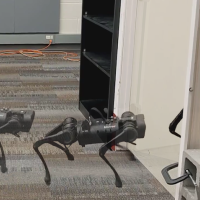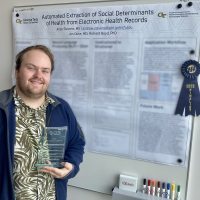3 min read
December 2020 was when the greatest number of people reported experiencing multiple hardships during the pandemic.
1 min read
Philip Santangelo wants to build a toolbox of mRNA drugs to activate or shut off specific genes to help the immune system fight cancer and other disorders.
4 min read
6 min read
Up to twice the amount of subglacial water that was originally predicted might be draining into the ocean – potentially increasing glacial melt, sea level rise, and biological disturbances.
5 min read
2 min read
A Georgia Tech Ph.D. student has created a new framework that enables a four-legged robot to perform increasingly complex tasks without relearning motions.
2 min read
6 min read
GridTrust is a cybersecurity project that relies on the unique digital fingerprint of individual semiconductor chips and cryptographic technology to help protect the equipment of electrical utilities.
2 min read
2 min read















